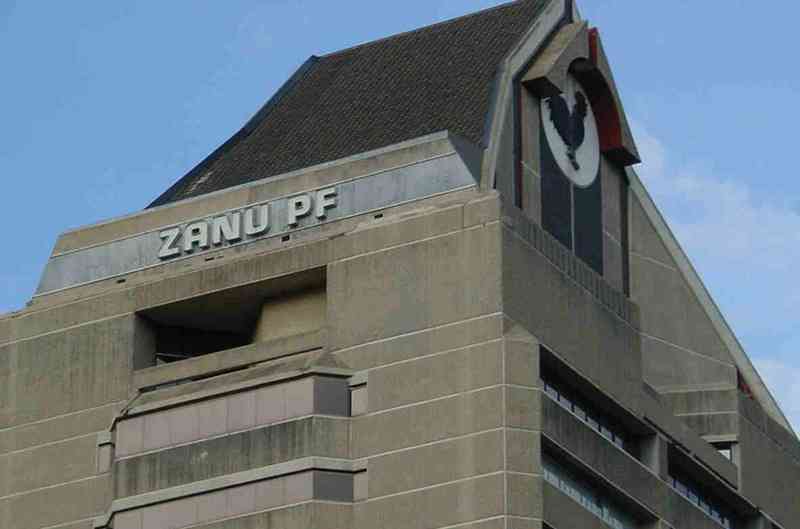
TOBACCO seed beds along the ever-flowing streams next to local dams in Karoi town are flourishing, despite fuelling siltation.
Planting next to the water source ensures thirsty seedlings have enough water and reduces labour for the farmers.
It has become a magnet that attracts tobacco farmers to put seed beds near rivers and streams in the area.
Jonah Mubakara from Kebvunde, Hurungwe West constituency, planted his seed beds next to the stream in the last tobacco season.
He said it was the only viable option to kick-start his tobacco farming project.
Tobacco seed beds need to be watered twice a day for almost eight weeks before germination as they demand a lot of care during the early stages.
“The sad reality is that we hardly have enough water to use during seed bed preparation. Streams next to us have dried up,” says Mubakara, who owns a plot about 30 kilometres from Karoi.
“For now, Karoi streams are better, they have enough water for this,” Mubakara said.
- Mlalazi chronicles his rags-to-riches story
- Mlalazi returns to roots with a free concert
- MP ropes in church in anti-drug fight
- TSL profits slow as costs escalate
Keep Reading
NewsDay investigations, as part of solution-based journalism, revealed that the Nyaodza River has changed its flow pattern because of heavy siltation caused by tobacco farmers who have established seed beds along the banks. Most communal farmers travel for almost 20 kilometres from Maumbe to Nyaodza, as it is the only surviving river left.
And this is a concern for Lloyd Kumirai, an environment and climate change advocate under Green Zone Appeal based in Magunje, Hurungwe district.
Kumirai is deeply worried that Nyaodza River, which borders three districts, namely Hurungwe, Kariba and Sanyati, is drying up fast and failing to hold enough water besides its great potential.
Nyaodza River under the Sanyati sub-catchment area is in northwestern Zimbabwe.
It drains into the Hurungwe communal area before discharging into the Sanyati basin.
It is part of the tributaries that help Lake Kariba, also known as the Zambezi River, bordering Zimbabwe and Zambia.
Climate change and unwarranted farming activities have recently affected Nyaodza River's flow pattern.
“I want to put much blame on tobacco farmers who have made most tributaries dry up fast because too much water is used on seed beds against competition from domestic animals. As it stands, few other rivers have water, but because of silt by June, they will have dried up, leaving the Nyaodza River to assume the responsibility. It’s a sad reality,” Kumirai said.
As part of the solution for environmental neglect, Green Zones Appeal aims to embark on massive tree planting in the whole of Hurungwe.
“We are geared at monitoring all our wetlands first, that are the main sources to all rivers. This needs a holistic approach from stakeholders as we aim to restore our vegetation for future generations,” Kumirai said, adding that local communities took the blame for Nyaodza’s demise.
“Local tobacco farmers have worsened the situation through digging wells along the dry riverbed when tending their tobacco seedlings leaving a lot of silt along the river course.
“It's a shame that Nyaodza River is slowly becoming a small stream yet it is part of regional tributaries contributing to Zambezi River.”
Green Zone Appeal is now fostering environment rejuvenation through green belts for the surrounding communities.
“We have fast growing trees to plant so as to catch up with the gap opened by tobacco curing. These are exotic trees that by two years only they will have become mature enough to start producing seeds,” Kumirai said.
Zimbabwe Tobacco Farmers and Growers Association president George Seremwe says tobacco farmers must be cautious when using water in developmental projects.
He suggested that farmers must resort to other means that protect the environment, including water bodies.
“There are better ways of serving water when farmers prepare seed beds. For example, floor trays save a lot of water through conservation. It is the cheapest and affordable way, which is quite accurate in terms of germination and management,” Seremwe said.
He called for a positive approach.
“We encourage small-scale farmers to start floor trays as it is environmentally acceptable,” Seremwe said.
Mashonaland West Proportional Representation MP Mutsa Murombedzi agrees that there is a need for collective responsibility by communities to help to restore life to affected rivers like Nyaodza.
“To bring life back to water bodies harmed by climate change, we must protect the land around them. Planting trees upstream helps to stop soil from washing into rivers,” she said.
Murombedzi added that clearing silt from dams and rivers could bring back their depth and flow.
“We should stop farming and mining too close to water sources. Local communities must lead in taking care of wetlands, collecting rainwater and sharing old ways that work. New ideas and old wisdom must work together. The government should support these efforts with funding and strict rules. Working as one, we can help rivers and lakes to thrive again,” she said.
The lawmaker is working closely with communities as part of a people-centred approach against the effects of climate change.
Meanwhile, the Environment Management Agency (Ema) education and publicity manager, Amkela Sidange, says the organisation recognises World Earth Day as an important environmental observance day aimed at demonstrating support for environmental protection under the theme, Our Power, Our Planet.
“With the increasing need for awareness on environmental protection, it encourages a unified approach among individuals, communities, businesses and governments to advocate for clean energy solutions.
“This theme also serves as a call to action, urging individuals and organisations to take proactive steps in their own lives and communities to promote sustainable practices and participate in local environmental initiatives. The significance of this day lies in its ability to raise awareness about environmental issues and mobilise individuals and organisations towards collective action,” she said.
Sidange added that Earth Day remained a vital platform for fostering environmental awareness and action with a vision for a sustainable future powered by renewable energy, thus in the process creating a clean, safe and healthy environment for all.
For Kumirai, it's high time Nyaodza River is protected so that it does not become part of the country's statistics of rivers that dried up due to negligence on the part of mostly tobacco farmers.










